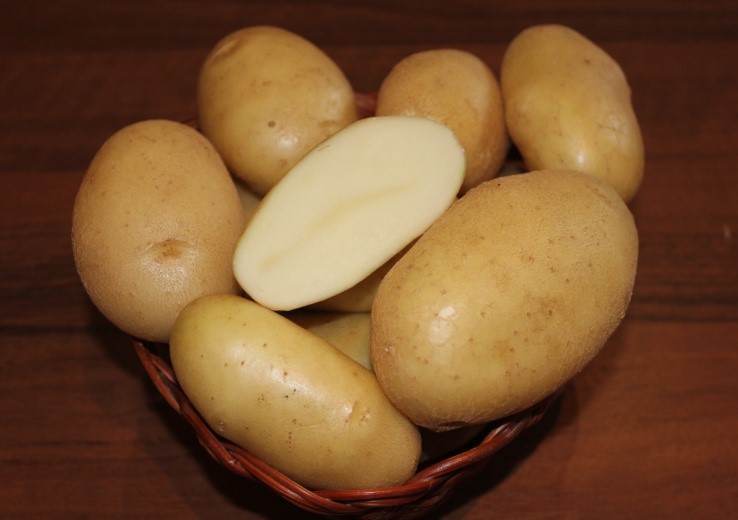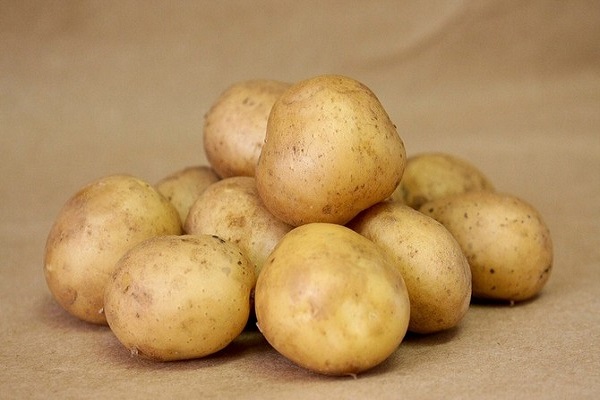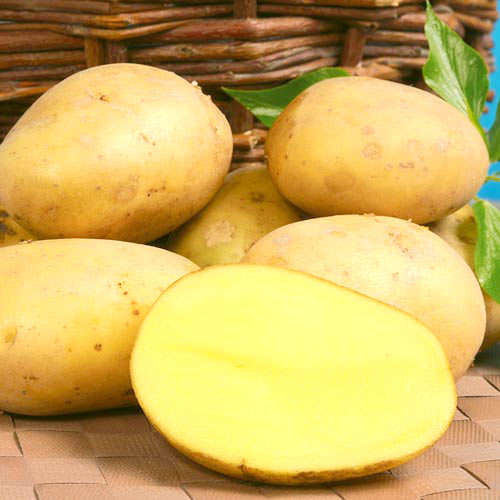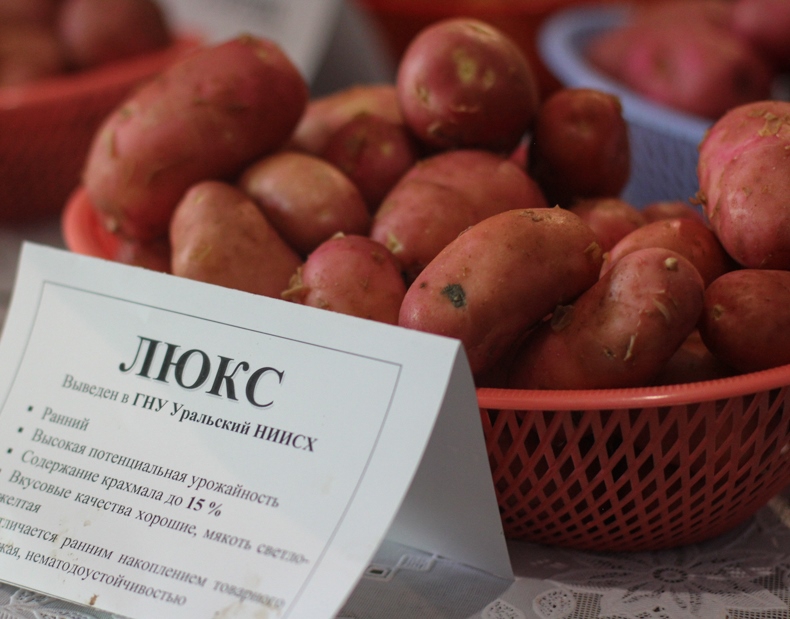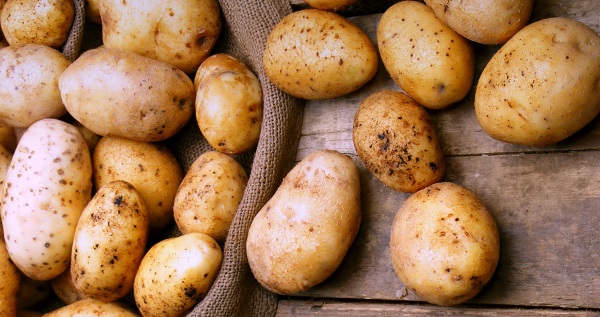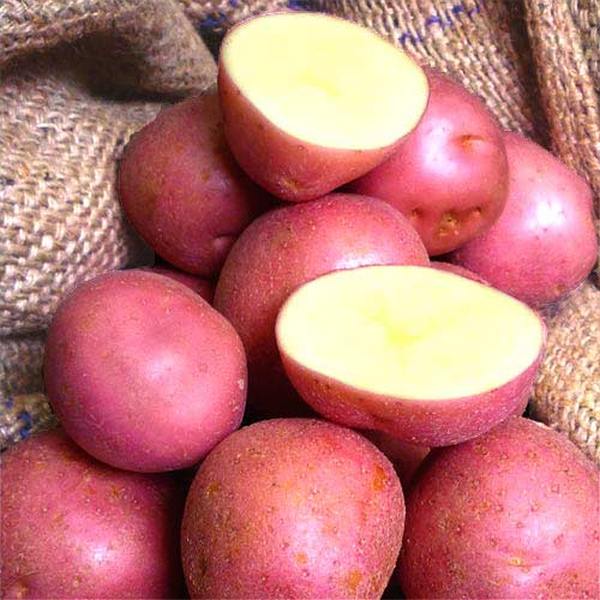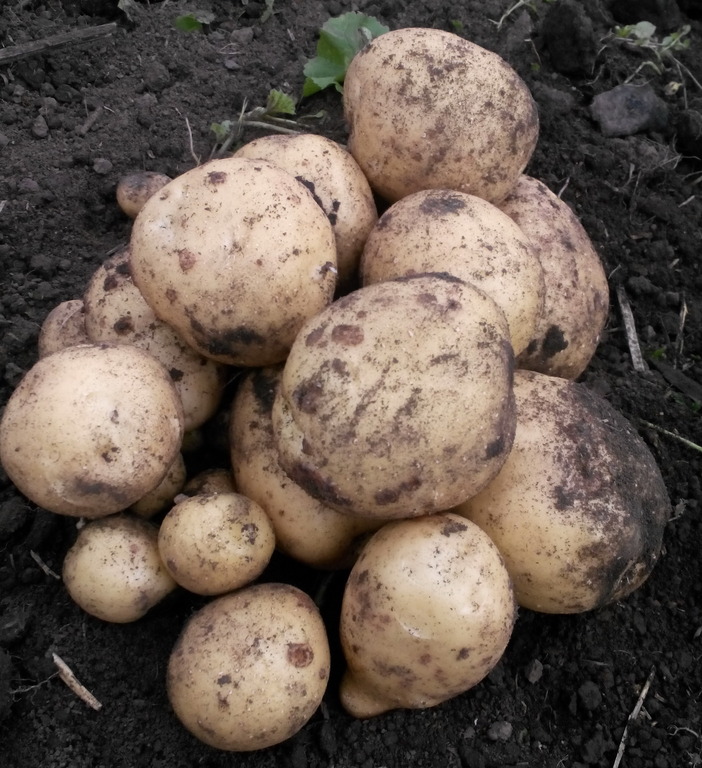Content:
Potatoes Krepysh - a variety of the Russian selection of the State Scientific Research Institute of Potato Farming named after V.I. Lorkha A.G. The variety is intended for cultivation in the central regions of Russia.
Characteristics and features of the variety
Potatoes Krepysh is an early-ripening variety for table use with excellent taste, long shelf life and good transportability. Krepysh potatoes have medium frost resistance.
The growing season is 60-80 days from planting in open ground to harvest. Blooming with bright purple buds with a red tint is observed 20-25 days after the first shoots appear and lasts an average of 14 days.
The yield of the variety, with the right agro-technological measures, reaches 125-250 c / ha. Up to 15-20 tubers are formed in the bush. The mass of individual tubers can reach 80-100 grams. Agro-technological measures include: timely and high-quality watering, fertilization, fertilizing plants with organic substances, hilling.
The skin is yellow, thin. The pulp is delicate creamy with a starch content of 10-12%. Due to the weak boiling of the pulp, the variety is widely used for making French fries, chips, baking, soups.
Bushes of medium height, erect. Leaves are medium-sized, dark green in color with slight waviness around the edges.
An important property of the Krepysh variety is its resistance to diseases such as nematodes and potato cancer.
A variety of Krepysh - Chugunka, Koroleva Anna, Gala, Impala.
Agricultural technology of cultivation
It is necessary to plant this potato variety in open ground in mid-May, when the threat of spring frosts has passed.
For planting potatoes, you should choose a well-lit area with fertile land and sufficient water supply. A soil with shallow groundwater is a good option and a guarantee of a high-quality and abundant harvest.
The ideal predecessors of potatoes are cereals, legumes, flax, perennial green manure plants.
Before planting Krepysh's tubers, it is recommended to treat them with disinfecting medicinal solutions to prevent and prevent the development of diseases. Then dry the treated tubers and incubate for 2 hours in a growth stimulant solution (Kornevin, Kornerost, etc.).
Prepare the soil before planting as follows:
- Loosen, dig holes, 30-40 cm deep and no more than 30 cm in diameter,
- Apply organic fertilizers, wood ash, rotted compost, phosphorus and potash fertilizers,
- You can add straw or hay, which additionally provides soil with minerals and enhances the growth and tuberization of potatoes,
- Prepared tubers with high-quality active growth "eyes" are laid in the soil,
- Buried with a loose layer of earth 10 cm, watered and slightly tamped the soil,
- Tubers are planted according to the scheme: 60 cm - between potatoes and 40 cm - in the aisle. This planting scheme guarantees high-quality lighting and ventilation between the plants, which prevents root rot when planting closely.
When the first shoots appear, it is necessary to loosen the soil, water the plants and huddle them. High-quality watering during flowering and bud formation is the key to a plentiful and high-quality harvest.
Adhering to the recommended planting rules, Krepysh potatoes and a complete description of cultivation techniques make it possible to obtain a plentiful high-quality crop that is well transported without losing its quality properties and must be stored.
The peculiarity of the variety when planting it early is in the following nuances:
- When planting in the soil in lowland areas, as well as in case of stagnant spring waters and excessive soil moisture, it is recommended to plant Krepysh potatoes using the ridge method or beds.
- Regular loosening, mulching of the soil and removal of weeds guarantee higher yields.
- A prerequisite for growing this variety is double hilling: during the germination period and the period of bud setting. With insufficient hilling, a decrease in yield is possible, an increase in the number of small potato tubers.
Harvesting is carried out in August-September. After digging, it is recommended to dry the tubers in the shade, and only then bookmark them for storage. Insufficient drying of potatoes contributes to the development of pathogens, pathological fungal diseases, decay of root crops and a deterioration in the taste of potatoes.
Diseases and pests
Potato Krepish has a weak immunity to late blight. The disease is especially acute when seedlings appear. The dark brownish spots characteristic of the disease are first formed on the leaves of potatoes, and if they are not sprayed with fungicidal preparations, they can spread to the tubers.
For the prevention of late blight, it is necessary to process the bushes during the formation of tops and in the flowering phase. After harvesting, the remaining tops should be destroyed by burning.
In case of soil contamination from predecessor plants, infection with Fusarium or Alternaria is possible.
The most common potato pest is the Colorado potato beetle. There are many ways and drugs to combat it.
Advantages and disadvantages of the variety
According to the positive reviews of vegetable growers growing this variety, potato Krepysh has the following advantages:
- ü Early ripening of tubers - the first digging of the crop can be done 30-40 days after planting,
- ü Abundant harvest (up to 15-20 large potatoes per bush, up to 3 centners per hectare of planting),
- ü Drought resistance. With irregular watering, but with mulching of the soil, excellent plant growth is observed without loss of elasticity and premature wilting,
- ü Excellent taste. The low content of starch and low boiling make it possible to prepare many delicious dishes, including French fries, casseroles,
- ü Good transportability,
- ü Keeping quality. Subject to the storage conditions and optimal air temperature and humidity in the cellar, keeping quality is up to 97%,
- ü Resistance to nematode, potato crayfish, rictoniosis, scab.
Of the disadvantages, experienced vegetable growers distinguish:
- ¾ The need for additional second hilling,
- ¾ Dependence of yield on fertilizing, loosening, watering, hilling,
- ¾ Possibility of spoilage of the crop due to insufficient drying before storing,
- ¾ Weak immunity to late blight.
The positive characteristics of the variety, simple agro-technological planting conditions, excellent potato quality, good keeping quality and transportability win the hearts and places for planting of both experienced and novice vegetable growers.
